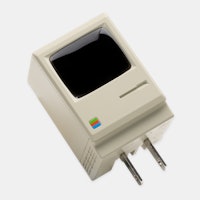Click to view our Accessibility Statement or contact us with accessibility-related questions




A Standard Approach to Evaluating New Cards

search
close
Sort by: Newest
keyboard_arrow_down
Let’s get the conversation started!
Be the first to comment.
PRODUCTS YOU MAY LIKE
Trending Posts in More Community Picks

Graham88
Completely surprised by the lack of blade diversity here on Drop...
I’ve been a collector of Blades since before my teens, and a retailer coming up on 15… or maybe 20 years. Drop has really been kind of an interesting experience for me, because I do occasionally get to see some unusual tech and sometimes EDC items that otherwise I might not have been aware of. And maybe it’s because I have a deep love of cutlery and bladed weapons, but I find myself trolling through the site looking at it what’s available; and it’s just it’s pretty much the same. And the bladed community here is just always confused me.. every single knife is about the same, they’re almost all drop points and although the handle materials change and brands change.. it’s really just the same knife over and over and over again... occasionally you’ll see a tanto or a slight variant; but rarely… and almost never a serrated blade. And I’m just deeply amazed at this diversion of serrated blades. And I’m just surprised there isn’t more of a request for diversity here.... and I...
Mar 12, 2020
JellyDPhoto
Can we get Sony E-Mount or other mirrorless camera options please..
Would be nice to see some Sony E mount full frame cameras on here. I currently shoot with a A99 and they killed the lense path for better or more option lenses and now is all E-Mount. 🤔
Jan 13, 2020
RayF
There Are Pandas, and Then There Are Pandas.
And this isn't either of them! The Pandas we're talking about here, are watches, not bears. And what got me thinking about them (again) was a link posted this morning by @cm.rook who pointed a few of us to the very attractive (and not terribly priced) Yema "Rallygraph" Panda which, in it's most traditional arrangement, looks like the one on the left, but can also be had in the version on the right: The model on the left is a true Panda, while the model on the right is called a reverse Panda. The reason for that distinction is clear--Panda bears, only come in the first arrangement. Now at this point, everyone should be thinking about the most well-know Panda, The Rolex Panda, which is actually a Daytona, and among Rolex Daytonas, the most famous of which is the Paul Newman Daytona, which was famous first, because it was Paul's, and second because it sold at auction for $17.8 million (US Dollars). The story of that auction is well-known so I'll only...
Nov 8, 2019





Magic set releases might be my favorite part of the game. We get to see new cards and speculate what decks can be made with them, debate their individual power level, and of course play with them. There are many different angles to examine the new cards, and I will cover just a few of them in this article.
Evaluating Power Level Understanding how powerful a card is in a vacuum can be a very simple affair (Glorybringer, Gideon, Ally of Zendikar), or can be complex and polarizing (As Foretold, Approach of the Second Sun). I think if you asked most veterans of the game how they evaluate the power level of a card they would probably say something like “just look at the card” but I will try to be a little more detailed than that.
Potential Decks for the Card Once we have established the baseline power level of the card, how strong the card is in combination with other cards in the format is the next topic to cover. Where this becomes the most relevant are combo or synergy cards. For example, when the card Scapeshift was printed, it may as well have had no text, because while a mass Crop Rotation is a powerful effect there wasn’t really any synergy with it until the card Valakut, the Molten Pinnacle was printed. When I first played magic in the ‘90s, we wrote on Lion’s Eye Diamonds to use as proxies, but after mechanics like Storm and Dredge entered the game, and cards like Goblin Charbelcher and Infernal Tutor, it became one of the most powerful cards in Legacy and had to be restricted in Vintage. These are two extreme examples to make a point, but it doesn’t always have to be as clear cut as this. Sometimes cards are good enough to be played but simply don’t have a critical mass of other cards to synergize with. Relentless Dead was an extremely powerful recursive threat, but the card did not see wide play until several sets after it was printed when Amonkhet provided multiple “anthem” effects for Zombies in Lord of the Accursed and Liliana’s Mastery.
Potential Answers to the Card Lastly, how the rest of the cards in the format interact from the opposing side should be observed. This is a fairly straightforward concept, and there’s no better example than an extremely powerful artifact from Rivals of Ixalan.
Conclusion Obviously this article only touches the surface of the many facets of evaluating new cards. I hope you enjoyed reading my views on the three most important factors when looking at how good new cards are for Standard. It will be interesting to seef the Rivals of Ixalan cards can provide tribal decks ample ammunition to overcome the energetic menace in the coming weeks.
Follow Rob · Profile: https://www.massdrop.com/profile/RobPisano/
· Twitter: @Rob_Pisano
Previous Articles · Storm in Vintage Cube:https://www.massdrop.com/talk/2975/storm-in-vintage-cube · An Early Look at Rivals for Standard:http://dro.ps/shaun-rivals · Why I Never Drop From Tournaments: http://dro.ps/eric-nevergiveup · The Art of Sideboard Construction - Sultai Energy: http://dro.ps/jon-sideboard · Blue Moon Beach Control: http://dro.ps/scott-bluemoon · A Commoner's View on Pauper: http://dro.ps/mark-pauper · Top 5 Modern Decks: http://dro.ps/pascal-modern